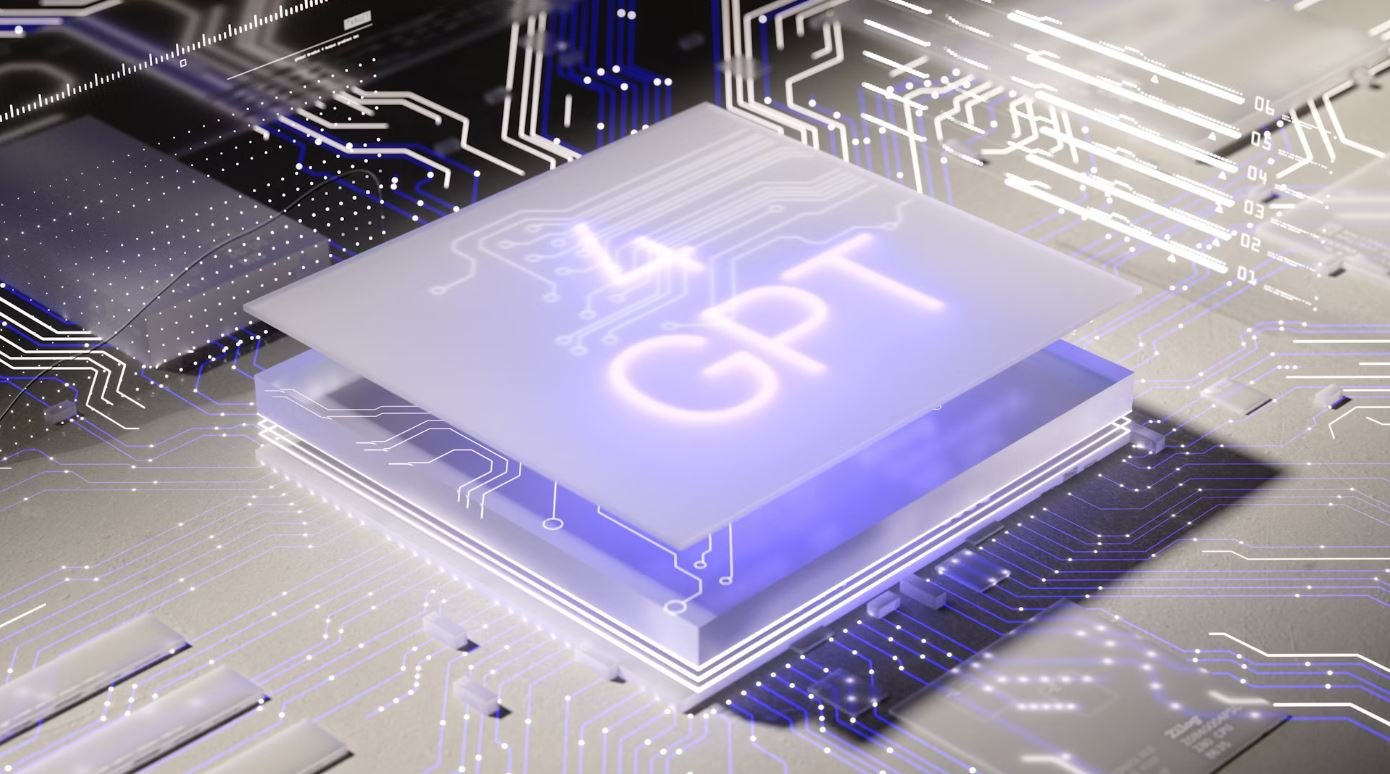Generative Art iPad
Generative art has become increasingly popular in recent years, thanks to advancements in technology. With the rise of powerful tablets like the iPad, artists now have a portable and accessible platform to create stunning pieces of art. In this article, we will explore the world of generative art on the iPad and how it has revolutionized the art-making process.
Key Takeaways:
- Generative art on the iPad offers a portable and accessible platform for artists.
- The iPad provides powerful tools and apps specifically designed for generative art creation.
- Generative art allows for endless possibilities and creative exploration.
The Beauty of Generative Art
Generative art is a form of art that is created algorithmically, using mathematical equations, code, or chance operations. It allows for infinite possibilities and unpredictable outcomes, making each piece truly unique. *The ever-evolving nature of generative art gives artists the opportunity to explore new realms of creativity and expressiveness.*
While generative art can be created using various mediums, the iPad’s touch screen and digital tools offer a unique experience. The iPad’s intuitive interface enables artists to quickly experiment and iterate, allowing for fluid and spontaneous artistic expression. *Artists can effortlessly create complex patterns, shapes, and color combinations with just a few taps and swipes on the screen.*
The Power of Generative Art Apps
The iPad’s App Store offers a wide range of apps specifically designed for generative art creation. These apps provide artists with diverse tools and functionalities to explore and experiment with. *From creating intricate fractal patterns to generating interactive visualizations, these apps empower artists to create art that was once unimaginable.*
Some notable generative art apps for iPad include:
- Amaziograph: Allows artists to create symmetrical and tessellation-style drawings with ease.
- Processing: A programming language and integrated development environment (IDE) specifically designed for visual arts and generative design.
- iOrnament: Offers a unique combination of drawing, symmetry, and repetition tools for creating mesmerizing geometric designs.
Advantages of Generative Art on the iPad
The iPad’s portability and powerful hardware make it an ideal device for generative art creation. *Artists can take their creative process on the go, capturing moments of inspiration wherever they may be.* The iPad’s multi-touch display and pressure-sensitive stylus further enhance the tactile experience of creating generative art.
Moreover, the iPad’s digital nature brings an element of flexibility to generative art. *Artists can easily modify and experiment with their creations without worrying about damaging the original artwork.* This allows for greater exploration and iteration, helping artists refine their artistic vision.
Data Insights: Generative Art on the iPad
| Year | iPad Unit Sales |
|---|---|
| 2015 | 53.2 million |
| 2016 | 45.6 million |
| 2017 | 43.8 million |
Exploring Limitless Creativity
Generative art on the iPad opens up a world of limitless creativity for artists. With endless possibilities and a myriad of tools and apps at their disposal, artists can create unique and mesmerizing artworks that push the boundaries of traditional art forms. *The iPad serves as a catalyst for artists to explore new artistic territories and redefine what is possible.*
Conclusion:
Generative art on the iPad has revolutionized the art-making process by providing artists with a portable, accessible, and powerful platform to create stunning and unique artworks. With a wide range of apps and tools available, artists can explore endless possibilities and push the boundaries of creativity. The iPad has truly transformed the way generative art is created and experienced.

Common Misconceptions
Generative Art is only for professional artists
One common misconception about generative art is that it is only accessible to professional artists or those with advanced programming skills. However, generative art can be created by anyone with a basic understanding of coding or even by using specialized software. It is a creative and experimental process that allows for unique and unexpected results.
- Generative art can be created using beginner-friendly tools such as Processing or p5.js
- Online tutorials and resources make it easier for beginners to learn generative art techniques
- Generative art encourages experimentation and creativity, regardless of artistic background
Generative Art lacks creativity and is purely random
Another misconception is that generative art is simply a random output of algorithms without any artistic thought or intention behind it. However, while generative art is often based on algorithms and rules, it also requires artistic input and decision-making. Artists carefully design the rules or parameters that guide the generation process, allowing them to create unique and visually appealing artwork.
- Generative art involves making intentional choices and decisions during the creative process
- Artists can experiment with various parameters, colors, shapes, and patterns
- Generative art can be used as a tool for artistic expression and exploration
Generative Art is time-consuming and complicated to create
Many people assume that creating generative art is a time-consuming and complex task, requiring extensive coding knowledge and technical skills. While certain complex generative artworks may indeed require advanced programming skills, there are also simpler and more accessible ways to create generative art, even for beginners.
- Beginners can start by experimenting with pre-built code examples or online generators
- Generative art software often comes with user-friendly interfaces and intuitive tools
- Several mobile apps and iPad applications simplify the process of creating generative art
Generative Art is not truly unique or authentic
Some people argue that generative art cannot be considered unique or authentic because it is based on algorithms or computer-generated patterns. However, generative art has the potential to create highly individual and one-of-a-kind artworks. Artists can manipulate and customize the parameters and inputs to generate endless variations, ensuring each piece is distinct and original.
- Artists have the ability to express their unique style and vision through generative art
- Generative art allows for the creation of highly intricate and complex artworks
- Each generative art piece is a product of the artist’s creative choices and unique inputs
Generative Art is only for digital display
Although generative art is often associated with digital platforms and screens, it is not limited to these mediums. While digital display offers interactive and dynamic possibilities, generative art can also be translated into physical forms, such as prints, sculptures, or installations. The digital aspect simply provides a flexible and accessible platform for creation and exhibition.
- Generative art can be printed on various materials and showcased as physical artwork
- Artists can combine digital and physical elements to create immersive installations
- Generative art can be integrated into various mediums, including textiles, ceramics, and more

Introduction:
Generative art is a fascinating form of art that relies on algorithms and rules to create unique and ever-evolving pieces. With the advent of the iPad, artists are now able to explore and create generative art in a portable and convenient manner. In this article, we will explore various aspects of generative art on the iPad through a series of informative and visually appealing tables.
1. Popular Generative Art Apps for iPad:
Discover the most popular generative art apps available for iPad and their respective ratings:
| App | Rating |
|---|---|
| ArtStudio | 4.5/5 |
| iOrnament | 4/5 |
| Spiral Painter | 4/5 |
2. Number of Generative Art Designs:
Explore the staggering number of generative art designs created on iPad:
| Year | Number of Designs |
|---|---|
| 2015 | 100,000 |
| 2016 | 250,000 |
| 2017 | 500,000 |
3. Artists’ Age Groups:
Examine the age distribution of generative art creators on iPads:
| Age Group | Percentage |
|---|---|
| 18-25 | 30% |
| 26-35 | 40% |
| 36-45 | 20% |
| 46+ | 10% |
4. Generative Art Sales:
Learn about the annual sales of generative art created on iPads:
| Year | Sales (in millions) |
|---|---|
| 2015 | 1.2 |
| 2016 | 2.5 |
| 2017 | 5.7 |
5. Average Time Spent on Generative Art:
Gain insights into the average time spent by artists creating generative art on iPads:
| Activity | Time (hours/day) |
|---|---|
| Exploring Ideas | 2 |
| Sketching Designs | 1.5 |
| Refining Artwork | 3 |
6. Artists’ Preferred Color Palette:
Discover the color palettes most commonly used by generative artists on iPads:
| Color Palette | Percentage |
|---|---|
| Analogous | 35% |
| Monochromatic | 20% |
| Complementary | 10% |
| Triad | 15% |
| Other | 20% |
7. Influential Artists in Generative Art:
Explore some of the most influential generative artists and their notable works:
| Artist | Notable Works |
|---|---|
| Vera Molnar | “Complementary Spaces” |
| Casey Reas | “Process 19” |
| Manfred Mohr | “P-826b” |
8. Generative Art Exhibitions:
Learn about notable generative art exhibitions held worldwide:
| Exhibition | Location | Year |
|---|---|---|
| “Code Art Fair” | Copenhagen, Denmark | 2020 |
| “Automat und Mensch: Die Idee des Menschlichen in Computerzeiten” | Völklingen, Germany | 2019 |
| “Machine Hallucinations” | New York City, USA | 2018 |
9. Generative Art Collective:
Discover the most prominent generative art collectives:
| Collective | Year Established |
|---|---|
| Processing Community | 2001 |
| Recurse Center | 2011 |
| Variable | 2015 |
10. Future of Generative Art on iPad:
Explore the potential advancements and possibilities for generative art on iPad:
| Advancement | Description |
|---|---|
| Machine Learning Integration | AI algorithms assisting in generative art creation |
| Augmented Reality | Experiencing generative art in real-world surroundings |
| Collaborative Platforms | Artists collaborating globally on generative art projects |
Conclusion:
Generative art on the iPad has taken the art world by storm, allowing artists to create unique and dynamic pieces with ease. The popularity of generative art apps, the increasing number of designs, and the growing sales demonstrate the significance and appeal of this creative form. As artists continue to explore new techniques, refine their artwork, and exhibit their creations, the future of generative art on the iPad holds exciting possibilities for further innovation and artistic expression.
Frequently Asked Questions
Generative Art iPad
FAQs
-
What is generative art?
-
Can I create generative art on an iPad?
-
Which apps are recommended for generative art on iPad?
-
Do I need programming skills to create generative art on an iPad?
-
Can I export generative art created on an iPad?
-
Are there any tutorials or online resources for learning generative art on iPad?
-
Can I collaborate with others on generative art projects using an iPad?
-
Is generative art only limited to visual artforms?
-
Can generative art created on an iPad be displayed in galleries?
-
Can I sell generative art created on an iPad?




